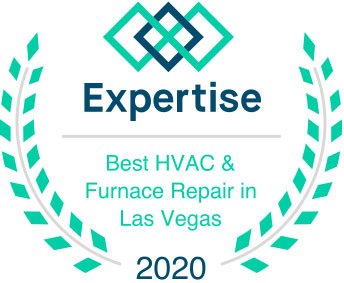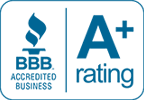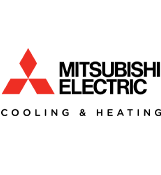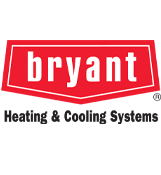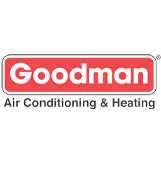
If you’re like many people who enjoy festive cheer, cozy times indoors with family and friends, and the austere beauty of winter, you also realize that the season has its downsides. For instance, those cozy moments and warm moods can disappear in a heartbeat if your household HVAC system experiences a disruption, and few things put a damper on festive cheer more quickly than an unpleasant surprise in the form of a higher-than-usual utility bill. Fortunately, you can guard against these and other issues by taking proactive steps to avoid common winter HVAC issues — and learning how to effectively troubleshoot them if they arise. Here’s what you need to know:
Recognizing the Signs of Winter HVAC Problems
Your HVAC system is required to work tirelessly during the winter months to keep your home interior comfortable. Cold temperatures and the consequential heavy usage, however, have the potential to strain even the most robust HVAC systems. Paying attention to warning signs of possible trouble can save you significant inconvenience, discomfort, and aggravation.
Signs that your HVAC may not be functioning as it should include unusual noises, burning odors, short cycling, and inconsistent heating. For instance, cold spots or inconsistent airflow may be indications of blocked air ducts while squealing sounds might mean that a fan belt is defective. Although loud banging and clanging noises sound ominous, the culprit is often merely a loose part that requires only a simple, inexpensive fix. Unexpected increases in monthly utility bills point to a range of possible causes, including dirty filters, leaks, undiagnosed mechanical issues, and an aging HVAC unit.
Common Winter HVAC Issues and Their Solutions
Clogged air filters are among the most common reasons for HVAC malfunctions in winter. Accumulations of household dust, pet hair, and other particulates restrict airflow, forcing the system to work harder to do its job. Depending on the type of filter your system has, it should be replaced or cleaned every one to three months. Neglecting this task often leads to poor air quality, uneven heating, and an increase in energy usage.
Another common problem in winter is frozen coils in the heat pump, especially during periods of extreme cold. Insulating exposed components helps prevent this from occurring. Try thawing frozen heat pump coils by turning off your system and gently pouring water over the coils to melt the ice. If this becomes a recurring problem, contact a professional for assistance.
Malfunctioning thermostats are another common HVAC problem during winter. If your home interior isn’t warming up as it should, check your thermostat to make sure it’s set correctly. Often, the problem is as simple as low battery power, so make a point of checking your thermostat’s battery at the beginning of every winter to make sure it’s good to go for the season.
Preventative Maintenance HVAC System
The first step in proactive HVAC maintenance is scheduling an annual tune-up and routine check. The technician will clean and inspect all components, clean or replace the filter, and generally ensure that everything is in good working order and is operating at maximum efficiency.
Check your vents and registers regularly to make certain they are clear of obstructions. Blockages not only reduce airflow but also increase the strain on your system. In worst-case scenarios, they pose a fire danger to your household. Keep curtains, furniture, bedding, and other objects several feet from vents so that heat can circulate freely throughout your home.
Poor or outdated insulation is another source of unnecessary heat loss, causing your HVAC to work harder to keep your home warm. Inspect windows, doors, and attic for drafts, and seal up any gaps you find with caulk or weatherstripping. Consider upgrading the insulation in your walls and attic to help retain heat, especially if you live in a vintage home.
When to Call in a Professional
Although some minor HVAC problems can be resolved with basic troubleshooting and maintenance, many require the expertise of an experienced professional. Burning odors, failure to produce heat, or shutting off unexpectedly are among indications that your HVAC system needs professional attention as soon as possible. These situations point to possible electrical faults, failing heat exchangers, or other serious problems. If a burning smell is part of the picture, turn the system off and call an electrical immediately. Even if you don’t have a backup heat source and have to seek other accommodations, it’s worth it to avoid a household fire.
More complex tasks, such as rebalancing your ductwork or repairing your heat pump are also best left in the hands of professionals. Trying to do these things yourself can be dangerous as well as have the potential to void your HVAC system’s warranty.
Energy Efficiency and Long-Term Savings
There’s more to dealing with HVAC issues than just creating and maintaining a consistent, warm, and comfortable home interior — it’s also an opportunity to maximize your household’s energy efficiency while keeping heating costs as low as possible. One of the easiest ways to accomplish this is to upgrade to a smart thermostat.
Smart thermostats allow homeowners to have precise, customizable control over their heating schedule. These devices allow you to fine-tune your HVAC system’s performance depending on your work schedule, general household habits, and individual preferences. For instance, if you’re like many people, you prefer to keep your home several degrees cooler while you and your family are asleep yet find it nearly impossible to remember to turn the thermostat down before turning out the lights. An intuitive smart thermostat will detect when you go to bed and adjust the temperature accordingly.
HVAC systems typically have a shelf life of between 10 and 15 years. If yours is reaching the end of its natural lifespan, it’s time to consider replacing it. Modern systems offer greater efficiency, with advanced features such as variable-speed motors and energy-saving modes. As a bonus, you may be eligible for tax credits and/or rebates if you purchase an ENERGY STAR model. Additionally, the long-term savings on utility costs and repair bills will make it a smart investment.
Consider an Emergency Plan
Even if your HVAC system is in top working form, having an emergency plan provides you and your family with another layer of protection against serious malfunctions during cold snaps. Keep reliable portable heaters on hand, and make sure that you know the location of your home’s circuit breakers. If you have a gas furnace, familiarize yourself with the location of the unit’s main shut-off valve. The ability to respond quickly can keep everyone safe and prevent further damage to your system until repairs can be made.
Contact Polar Air & Heating, Inc. Today to Learn More
Polar Air & Heating, Inc. has been providing top-quality HVAC services since 1998 to Las Vegas and the surrounding communities. Besides routine maintenance and heating tune-ups designed to keep your household toasty during a chilly Mojave Desert winter, we also offer a full spectrum of HVAC repairs and installations, and because we’re ENERGY STAR certified, we’re equipped to help you find an energy usage strategy that prioritizes energy efficiency and the savings that come with it.
Contact Polar Air & Heating, Inc. today to schedule an appointment to get your HVAC ready for winter.


